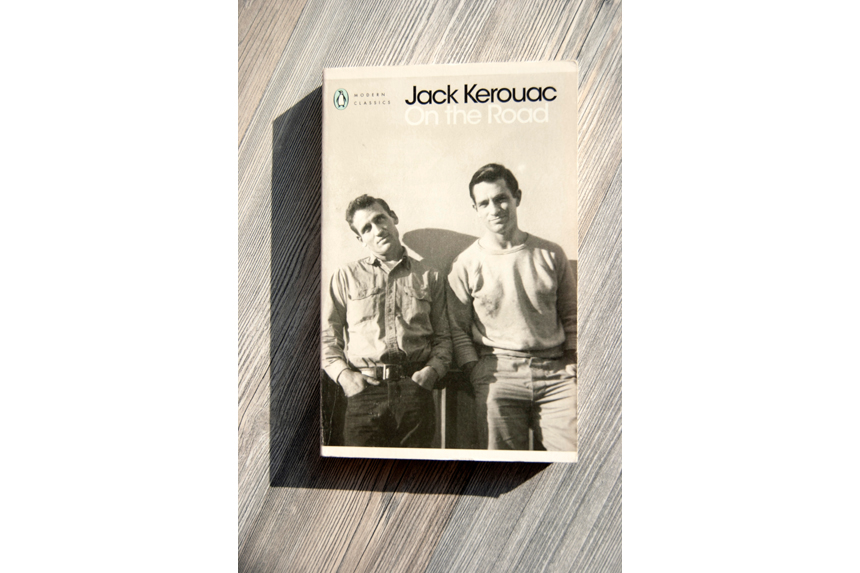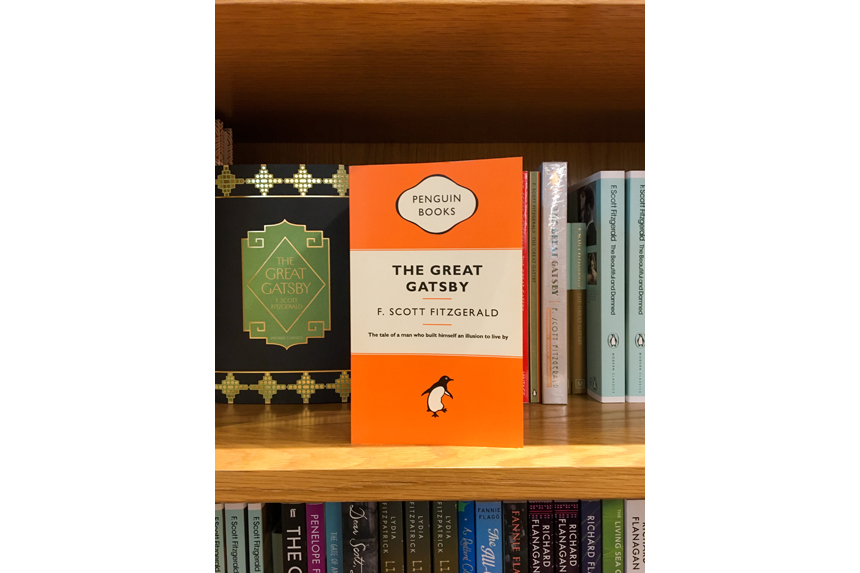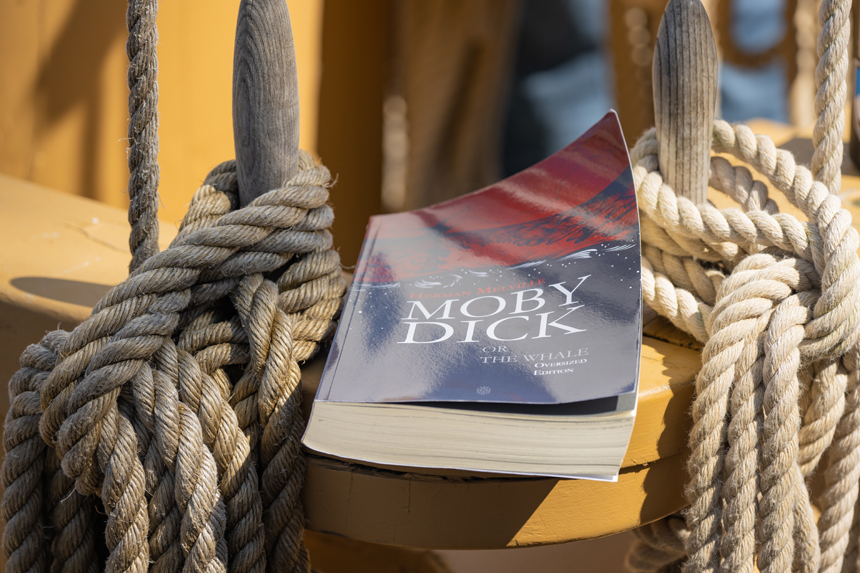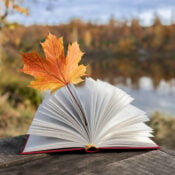They are the bane of high school literature classes. They are the reason so many Americans quit reading after school.
They are the most overrated American novels.
(The writer would like to note that he’s actually read all of these, although there was one he couldn’t finish; no, it wasn’t #10).
10. Twilight – Stephenie Meyer (2005)
Admittedly, this is like shooting fish in a barrel, and the book was obviously a victim of being overhyped. However, it is also objectively bad. Writers like Anne Rice reinvigorated the vampire genre by investigating angst and pushing the boundaries of sexuality. This book made vampires sparkle. The book does the heroine, Bella, a huge disservice by having her be unconscious for the story’s major action moment. Also, no one questions why the Cullens just keep going to high school. The dad gets to be a doctor, but the kids are permanently stuck in the school system? That’s worse than any of Lestat’s existential crises.
9. On the Road – Jack Kerouac (1957)

It’s easy to see why this one has been so heavily romanticized . . . by dudes. Sure it’s a common fantasy to want to wander the country, but Dean Moriarty is a nightmare of infidelity, abuse, and absentee parenthood. His constant leaving and returning to Camille may demonstrate that the Beat Generation was about “freedom,” but the novel’s attitudes toward women were squarely in the 1850s. Sal is only marginally better as he skates by on hand-outs and excuses Dean’s behavior. Even after all of the crappy stuff Dean does, including abandoning Sal himself on more than one occasion, the book nevertheless ends with Sal still romanticizing his vision of Dean.
8. The Da Vinci Code – Dan Brown (2003)
Some books tend to suffer from overinflated expectations, while others suffer from presenting an old concept as if it were a revelatory new idea. The Da Vinci Code fell victim to both. While Dan Brown knew how to keep a plot moving, the book gets a lot wrong about the art, history, geography, and religion it’s using in the story. One of the biggest whiffs is making it sound like the Priory of Sion was a “real” secret order that dated back to 1099, when it was really a hoax created in the 1950s by Pierre Plantard. The idea of Jesus having descendants wasn’t new, having been suggested in everything from non-fiction like The Holy Blood and the Holy Grail, movies like Dogma, and even the 1990s DC Comics/Vertigo series Preacher. Brown hurt his own case in interviews by asserting fictional stuff was actually real; in the end, the book sold huge and resulted in three films, but so did Divergent.
7. The Great Gatsby – F. Scott Fitzgerald (1925)

Okay, this one might be partially our fault. A pillar of the “Everyone in this book is actually awful” subgenre (Tom, for example, advocates white supremacy more than once), The Great Gatsby today mostly survives as a handbook for Roaring Twenties college parties. In fact, the novel was in danger of fading away by the time that Fitzgerald died in 1940. Shortly after the United States entered World War II, the Council on Books in Wartime sent out special “Armed Forces Editions” of novels to troops overseas. This program delivered more than 150,000 copies of The Great Gatsby to American G.I.s, and they enjoyed the book more than sleeping in foxholes and taking back Belgium. The Saturday Evening Post covered the program in the June 23, 1945, issue in an article called “What the G.I. Reads.” That piece inadvertently helped an effort spearheaded by Edmund Wilson, a friend of Fitzgerald and a literary critic, who hyped all of his late friend’s work. The book has continued to sell well, mostly because it’s assigned reading in almost every American high school.
6. The Catcher in the Rye – J.D. Salinger (1951)
Holden Caulfield is, frankly, a privileged whiner. He’s failed out of his boarding school at the novel’s outset, but his parents have set him up with a new one by novel’s end. For all of his teen angst and existential crises, he’s got far less to worry about than other kids his age. In fact, most of his problems, from his physical confrontation with his roommate to his academic state of affairs, from a different physical altercation with a pimp to bugging Carl about sex, seem to be of his own making. Holden may have been a symbol of rebellion in the 1950s and 1960s, but he probably would have been the antagonist in later decades. If Holden were in The Outsiders, he’d definitely be a Soc.
5. The Scarlet Letter – Nathaniel Hawthorne (1850)
Let’s get one thing straight: Hawthorne is an important part of America’s literary tradition and an overlooked foundational figure in the horror genre. However, whereas “Young Goodman Brown” is an absolute killer in terms of symbolism, Letter tries to kill you with symbolism. When he’s not using more imagery cloaked in red than an M. Night Shyamalan film, he’s adding insane levels of detail to items that don’t actually figure much in the narrative; in one scene, Hester waits in a hallway whose appearance is elaborated upon in hundreds of words and then doesn’t appear in the story again. The big revelation is actually telegraphed much earlier than the climax of the book, making you wonder why it’s given away. In fact, most of the secrets in the book are just given up in random conversations, mainly leaving the suspense to how Hawthorne’s going to mention another shade of red.
4. The Sound and the Fury – William Faulkner (1929)

I waffled on this one. On one hand, Faulkner is an indisputable master. His short story, “A Rose for Emily,” is an all-timer. He co-wrote the screenplay adaptation of Raymond Chandler’s film noir giant The Big Sleep. He was definitely a diligent craftsman. But, and this is significant, The Sound and the Fury is written in such a way that it seems like it’s trying to alienate the reader. It’s the definition of a novel that is “work” to read. And that’s not to say that novels can’t or shouldn’t challenge you, but in its technical wizardry, it doesn’t really make you care about the characters while trying to dazzle you with its shifting stream of consciousness narrators, broken and revolving timelines, and, in some cases, deliberate eschewing of punctuation to represent the minds of both a man who is brilliantly disjointed and his brother who is mentally challenged. It’s not completely impenetrable, and it’s taught mainly for its style, but it’s exactly the kind of book that people encountered in school and put them off reading.
3. Gone with the Wind – Margaret Mitchell (1936)
The most popular book with the most male characters who join the KKK, Gone with the Wind also features the absolute worst “heroine” in American literature and film. Scarlett O’Hara is basically a spoiled monster who never really learns anything and uses her own misfortune to justify further awful behavior. Her personal relationships are a slow-moving natural disaster, sucking everyone from her sister to her eventual three husbands into a vortex of despair (which, really, is apropos to the title). Apart from Scarlett, the book romanticizes a cultural system built on slavery and then idly watches as several established characters join the Klan in the post-war era and participate in atrocities; neither the book nor Mitchell’s own personal commentaries completely reveal where her own sympathies lay. It’s bizarre, given Scarlett’s behavior throughout and Rhett committing marital rape, that GWTW has come to be regarded as a romantic classic.
2. Atlas Shrugged – Ayn Rand (1957)
Ayn Rand was born in Russia, but she became a citizen of the United States 26 years before Atlas Shrugged was published here. It’s an extremely long novel that fashioned a long and convoluted plot to reach a climax where one of the protagonists . . . delivers a three-hour radio address in support of selfishness. Unlike other 1100-page books that cloak political philosophy in pseudo-science fiction (hey, there have to be others, right?), this is one that some people have taken very seriously and developed real economic policy around in this very country. I’m sure that’s going great.
1. Moby-Dick – Herman Melville (1851)
If you prefer your narratives hidden inside a lengthy How-To guide on whaling, this is the book for you. Much like The Great Gatsby almost a century later, Moby-Dick appeared to be heading toward a fate of sinking without a trace. It didn’t pick up its reputation as “The Great American Novel” until D.H. Lawrence wrote about it in Studies in Classic American Literature in 1923, and even then it took a few years, and new printings in 1926, to start to catch on. Sure, there are things to praise about the man-against-nature theme and the concept of the futility of revenge, but above all things, Moby-Dick commits the sin of being boring. As the Pequod goes on its quest, the crew meets other boats who have encountered the great white whale not once, not twice, but nine times. Some might say that’s extension of the metaphor or an exercise in building tension (each ship is more damaged than the last). Others might say, “Herman, you’re dragging it out. As if three chapters on whale paintings weren’t already doing that.” Nevertheless, the novel, like Queequeg’s coffin, refuses to sink. And despite being beloved by various critics and reading lists, it remains a chore, rather than a joy.
Become a Saturday Evening Post member and enjoy unlimited access. Subscribe now




Comments
Hey- you aren’t allowed to review a book if you didn’t finish it! I’ve read 8 of these 10 books, some of them more than once, and I really like them all except “Catcher in the Rye”- Holden Caulfield IS an insufferable whiner! I don’t think being required to read books in high school or college turns people off from reading- in fact, it may be the only time some people do read.
Thanks to my high school English teacher, I love William Faulkner and Thomas Hardy, I found “The Great Gatsby” great, I totally understand “The Scarlet Letter”, and I got some Shakespearean exposure, none of which I would have on my own.
Maybe Mr. Brownfield can follow up with “overrated British literature” and explain why “The Turn of the Screw” is considered great; now THERE is a book that is tedious and seems to have no point!
I would add Infinite Jest. Faulkner’s technology fascinated me, but Wallace’s annoyed me.
Unfortunately, Moby-Dick was required reading in high school with a required test. Between making myself read it and the Cliff’s Notes, I got a ‘B’ which was better than I thought. Worse still was ‘Gone With The Wind’. Again, your ‘review’ of the book here is right on target. I might add that the horrendous length of the book compounded the whole nightmare to an almost absurd level.
The film was not accessible to help out, so I had to read every page of the Ms. Scarlett drama. Not knocking Vivien Leigh at all by the way. Brilliant and mesmerizing actress of Hollywood’s Golden Age. Clark Gable, Olivia de Havilland, goes without saying. I got a ‘C’ on that test. The teacher noted I needed to get to ‘the finer points’ more.
‘The Catcher in the Rye’ not a favorite either. I’m convinced it led to ‘Rebel Without A Cause’ several years later. An easier read than the others, I got a ‘B’ on the test. ‘On the Road’ I did read after high school when I bought a copy at a garage sale. This largely comes down to an insecure guy letting himself be the flunky of a higher status guy for at least some residual status.
I never knew about the strong World War II soldiers connection to ‘The Great Gatsby’ before. I didn’t have to read that book in school, but can see how it’s kept the ’20s almost as popular as the ’50s to this day. Indeed, several years into this decade, ‘The ’20s’ still means the 1920s unless otherwise specified.
The ’74 film helps too. I have friends born between ’72-’74 (a nostalgia era in the midst of Watergate) really into the ’20s, that have thrown some fun, authentic Roaring ’20s parties. What’s romanticized was the glamourous life, style and looks of the wealthy we apply across the board, when most Americans then just led ordinary day to day lives.